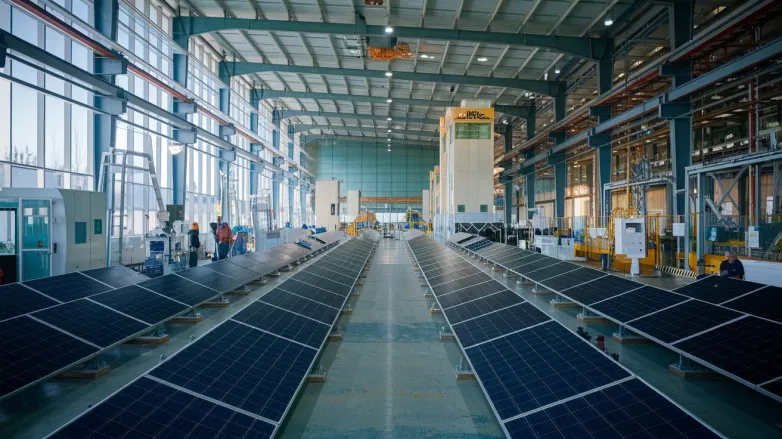Low-Temperature Sequential Deposition Lifts Inverted Perovskite Solar Cells Efficiency Record
- Low-temp sequential deposition using EMI-DMP delivers 26 %-plus inverted perovskite efficiency and long-term stability, edging PSCs closer to market.

Shanghai Jiao Tong University scientists have unlocked a fresh pathway to higher-efficiency inverted perovskite solar cells by refining the classic two-step coating process. Their low-temperature sequential deposition (LTSD) technique swaps harsh annealing for a gentle 85 °C bake yet still drives a complete conversion from the non-photovoltaic δ-phase to the power-hungry α-phase—without scarring sensitive self-assembled monolayers (SAMs).
At the heart of the breakthrough is a bespoke ionic additive: 1-ethyl-3-methyl-imidazolium dimethyl phosphate (EMI-DMP). Introduced into the PbI₂ precursor, the molecule weaves a porous “breathing” network that welcomes bulky organic ammonium salts. Capillary-style infiltration stitches the hybrid perovskite lattice together, while EMI-DMP subtly lowers surface free energy, flattening the barrier for the crucial δ→α transition.
The payoff is visible under the microscope. LTSD films emerge as pinhole-free mosaics of 1.3 µm grains—more than triple the size typically reported for low-temp routes. X-ray diffraction confirms phase purity; surface probes find virtually no residual PbI₂, eliminating shunt pathways that throttle voltage.
Device metrics follow suit. Champion cells post a certified 26.0 % power-conversion efficiency (26.5 % internally measured) with negligible hysteresis. Open-circuit voltage leaps by over 100 mV versus control devices processed at conventional temperatures, underscoring EMI-DMP’s role in passivating interfacial traps. Encapsulation tests add real-world credibility: modules retain 93.1 % of initial output after 1,000 hours at 85 °C/85 % RH (ISOS-D-3) and 95.4 % under 65 °C maximum-power tracking (ISOS-L-2).
Beyond the headline numbers, the work re-energizes sequential deposition—a scalable coating strategy long overshadowed by one-step spin-casting—in the race toward commercial perovskite photovoltaics. By proving that gentle thermal budgets can coexist with record efficiencies, the Shanghai group opens the door to flexible substrates, tandem stack integration, and roll-to-roll production lines where temperature windows are tight and throughput is king.
Equally important, the chemistry blueprint invites further molecular tinkering. Tailor-made ionic additives could be mixed-and-matched with cation-engineered perovskites, wider-bandgap alloys, or tandem-friendly compositions, accelerating the march from laboratory milestone to rooftop reality.
Also read

